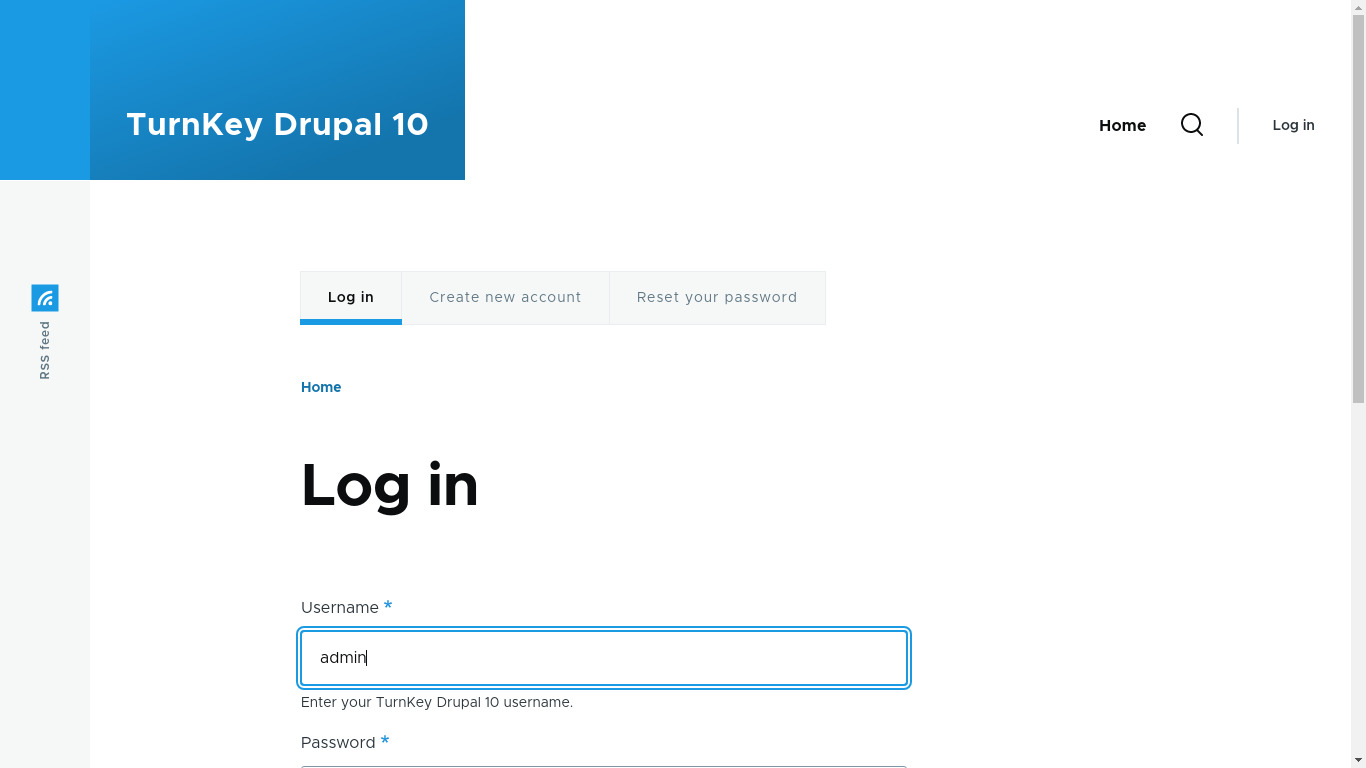You are here
Drupal 10
Content Management Framework
Drupal is an open source content management platform licensed under the GPL. Equipped with a powerful blend of features, Drupal can support a variety of websites ranging from personal blogs, corporate brochures and large community-driven websites. This appliance includes Drupal v10.x.
Run from browser
Builds
GitHub
This appliance includes all the standard features in TurnKey Core, and on top of that:
- Drupal 10 configurations:
- Installed (using composer) from upstream source code to /var/www/drupal10
Security note: Updates to Drupal may require supervision so they ARE NOT configured to install automatically. See below for updating Drupal. And/or see Drupal documentation
- Includes drush and composer (and turnkey-drush and turnkey-composer wrapper/helper scripts) for command line administration and configuration.
- Drupal security update alerts delivered to your inbox - requires Security Alerts ('secalerts') be enabled on firstboot with a valid email address.
- Note - For trouble free commandline usage (i.e. Composer or Drush) PHP RAM limit may need to be bumped to 2048MB. For that to work, the system requires at least 2GB+ free memory (physical &/or virtual; i.e. swap - a temporary swap file is acceptable).
- Installed (using composer) from upstream source code to /var/www/drupal10
- Bundled Drupal 10 modules and dependencies (installed to /var/www/drupal10/web/modules):
- Field group: Allows fields to be grouped together.
- Google analytics: Adds Google Analytics js tracking code to all your site's pages.
- Imce: Powerful image file uploader and browser, with support for on the fly resizing.
- PathAuto: Auto-generate search engine friendly URLs (SEO).
- Token: Provides a shared API for replacement of textual placeholders with actual data.
- Note: Only some modules are enabled by default. To enable/disable
modules, navigate to Administer > Modules (or http://example.com/admin/modules). Some modules may require additional configuration and/or permissions settings.
- SSL support out of the box.
- Adminer administration frontend for MySQL (listening on port 12322 - uses SSL).
- Postfix MTA (bound to localhost) to allow sending of email (e.g., password recovery).
- Webmin modules for configuring Apache2, PHP, MySQL and Postfix.
Supervised Manual Drupal Update
It is possible to check for and install updates from the Drupal Admin UI:: Admin > Reports > Available Updates
Updates for Drupal 10 Core often need to be done via commandline. For full details, please consult the Drupal8 Upgrade docs, we recommend using Composer to update from the commandline:
# update composer - not strictly neccessary turnkey-composer self-update turnkey-composer update drupal/core webflo/drupal-core-require-dev --with-dependencies turnkey-drush updatedb -y turnkey-drush cr
Modules can be updated like this, e.g. ctools:
turnkey-composer update drupal/ctools turnkey-drush updatedb -y turnkey-drush cr
We also recommend that you subscribe to the drupal.org security newsletter (create a user account on drupal.org and within your drupal.org profile:: Edit > My newsletter tab).
Usage details & Logging in for Administration
No default passwords: For security reasons there are no default passwords. All passwords are set at system initialization time.
Ignore SSL browser warning: browsers don't like self-signed SSL certificates, but this is the only kind that can be generated automatically. If you have a domain configured, then via Confconsole Advanced menu, you can generate free Let's Encypt SSL/TLS certificates.
Web - point your browser at either:
- http://12.34.56.789/ - not encrypted so no browser warning
- https://12.34.56.789/ - encrypted with self-signed SSL certificate
Note: some appliances auto direct http to https.
Username for adminer:
Login as username adminer
Username for drupal 10:
Login as username admin
Username for database administration:
- Adminer; login as MySQL username adminer:
https://12.34.56.789:12322/ - Adminer database management web app
- MySQL command line tool; log in as root (no password required):
$ mysql --user root Welcome to the MySQL monitor. Commands end with ; or \g. Type 'help;' or '\h' for help. Type '\c' to clear the current input statement. mysql>
Username for OS system administration:
Login as root except on AWS marketplace which uses username admin.
- Point your browser to:
- https://12.34.56.789:12321/ - System control panel
- https://12.34.56.789:12320/ - Web based command line terminal
- Login with SSH client:
ssh root@12.34.56.789
Special case for AWS marketplace:
ssh admin@12.34.56.789
* Replace 12.34.56.789 with a valid IP or hostname.


